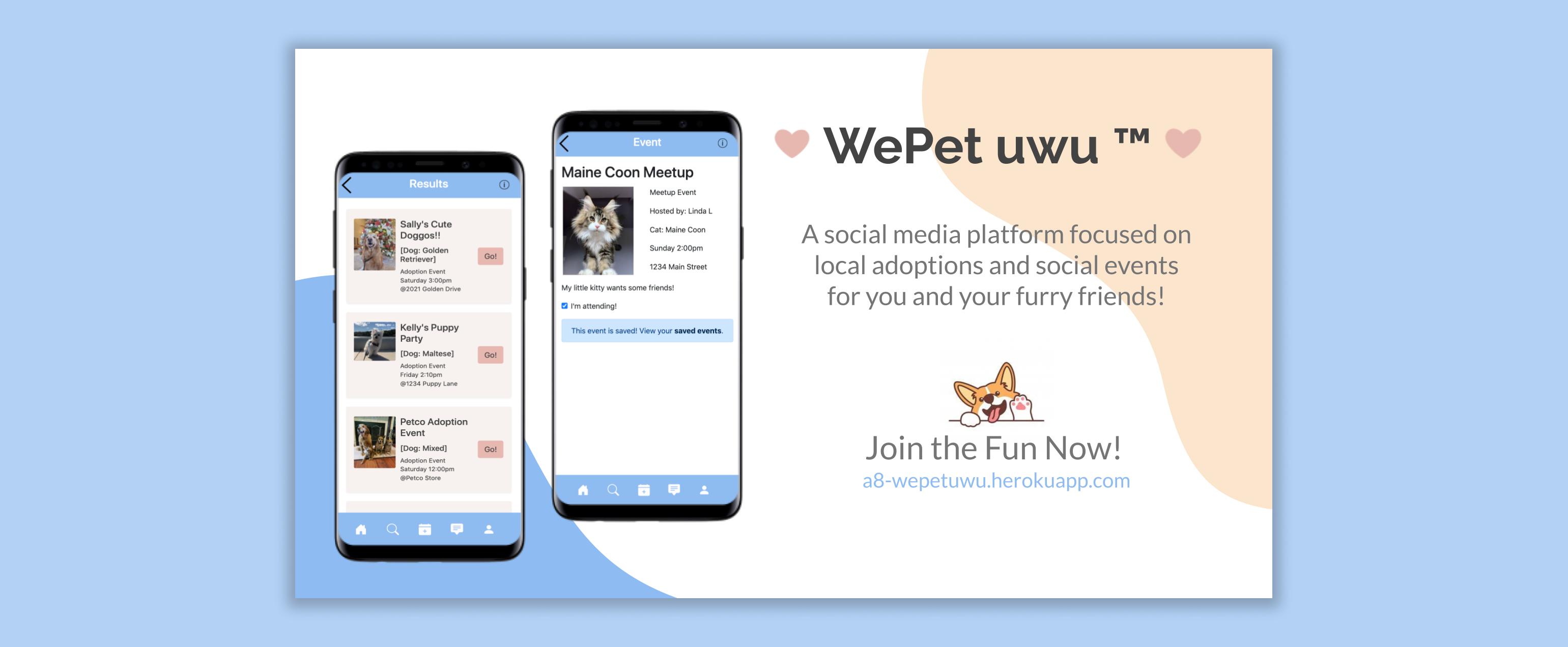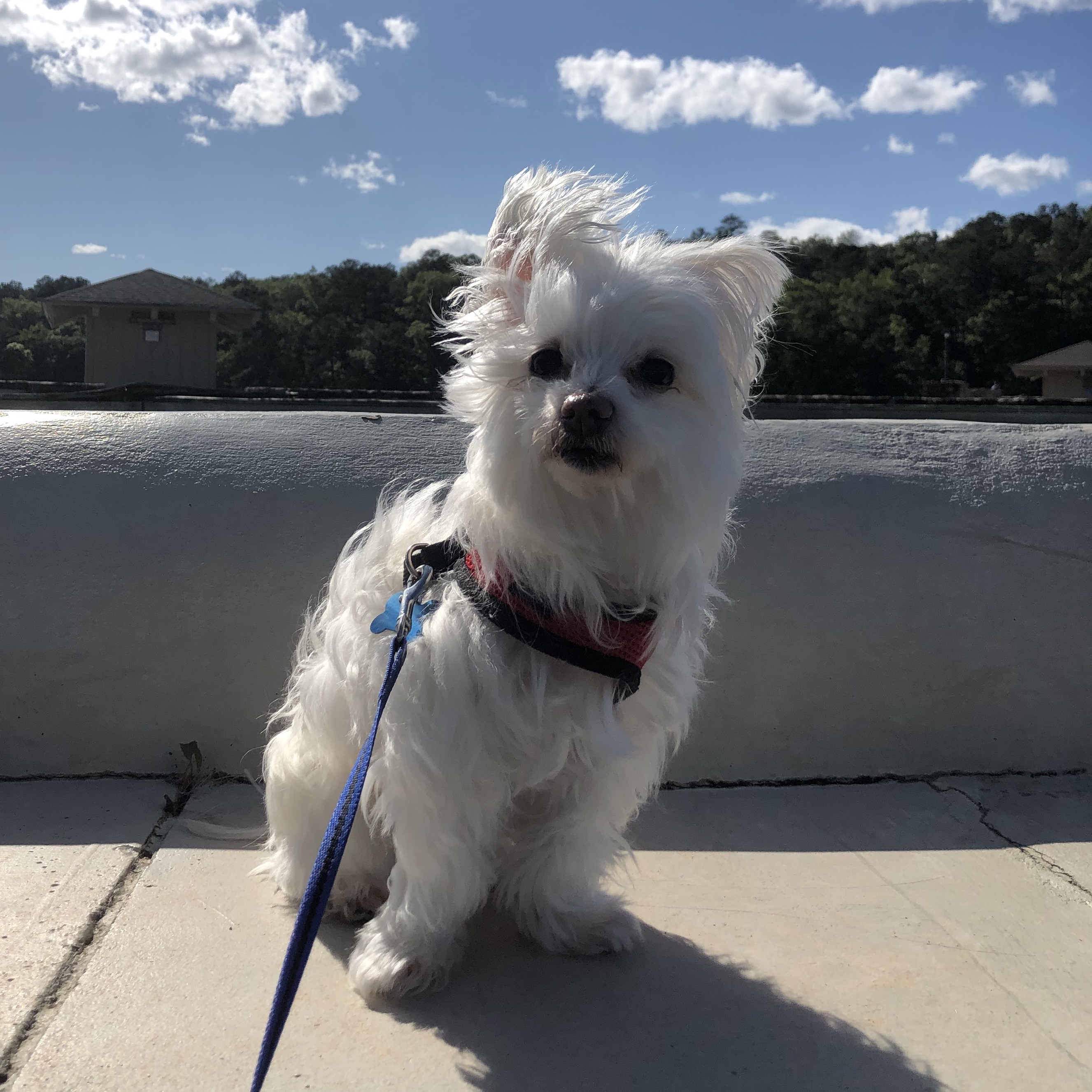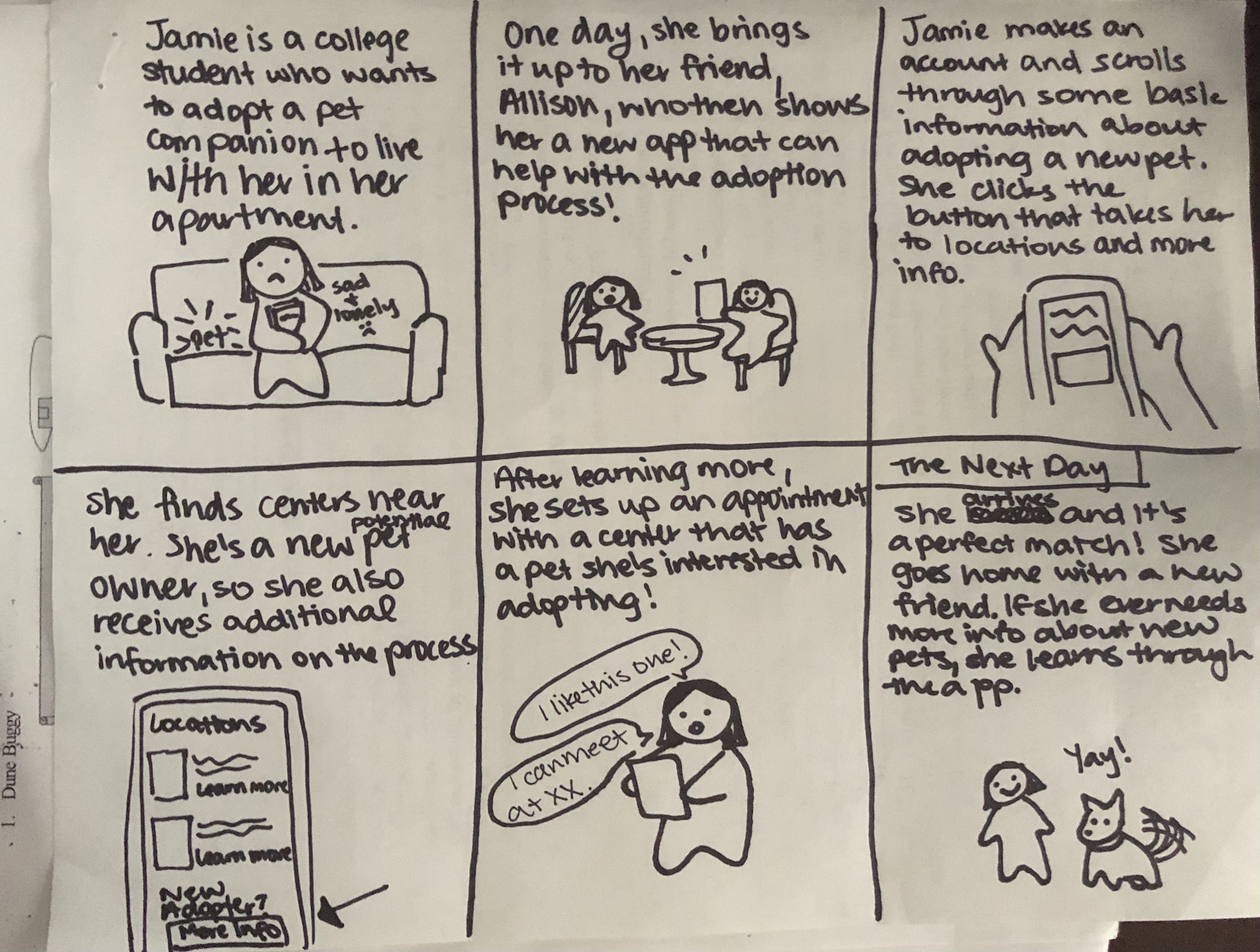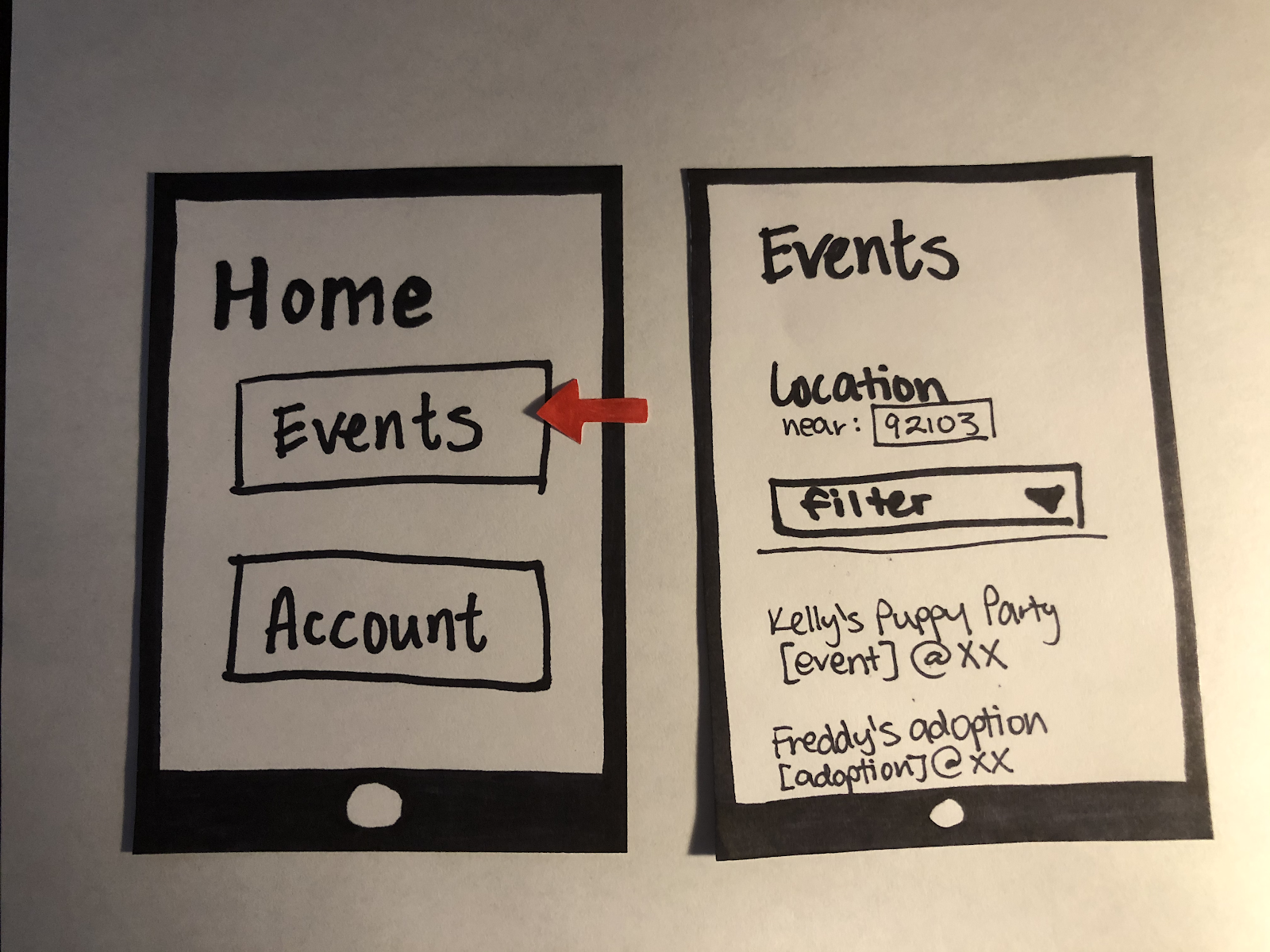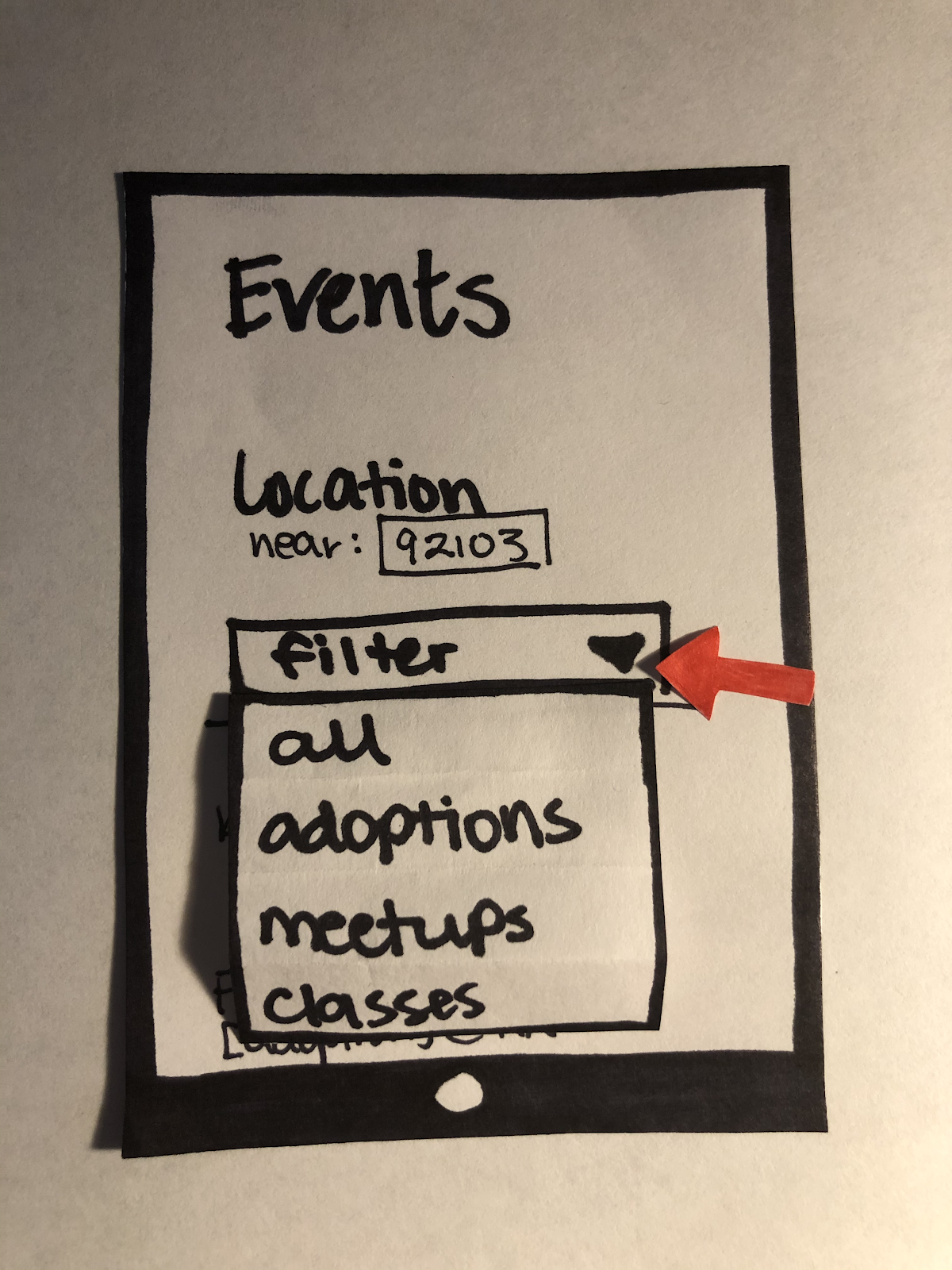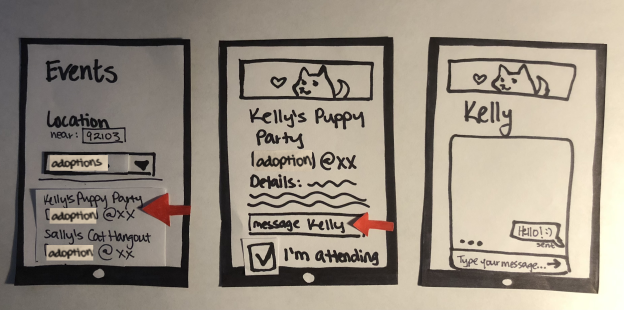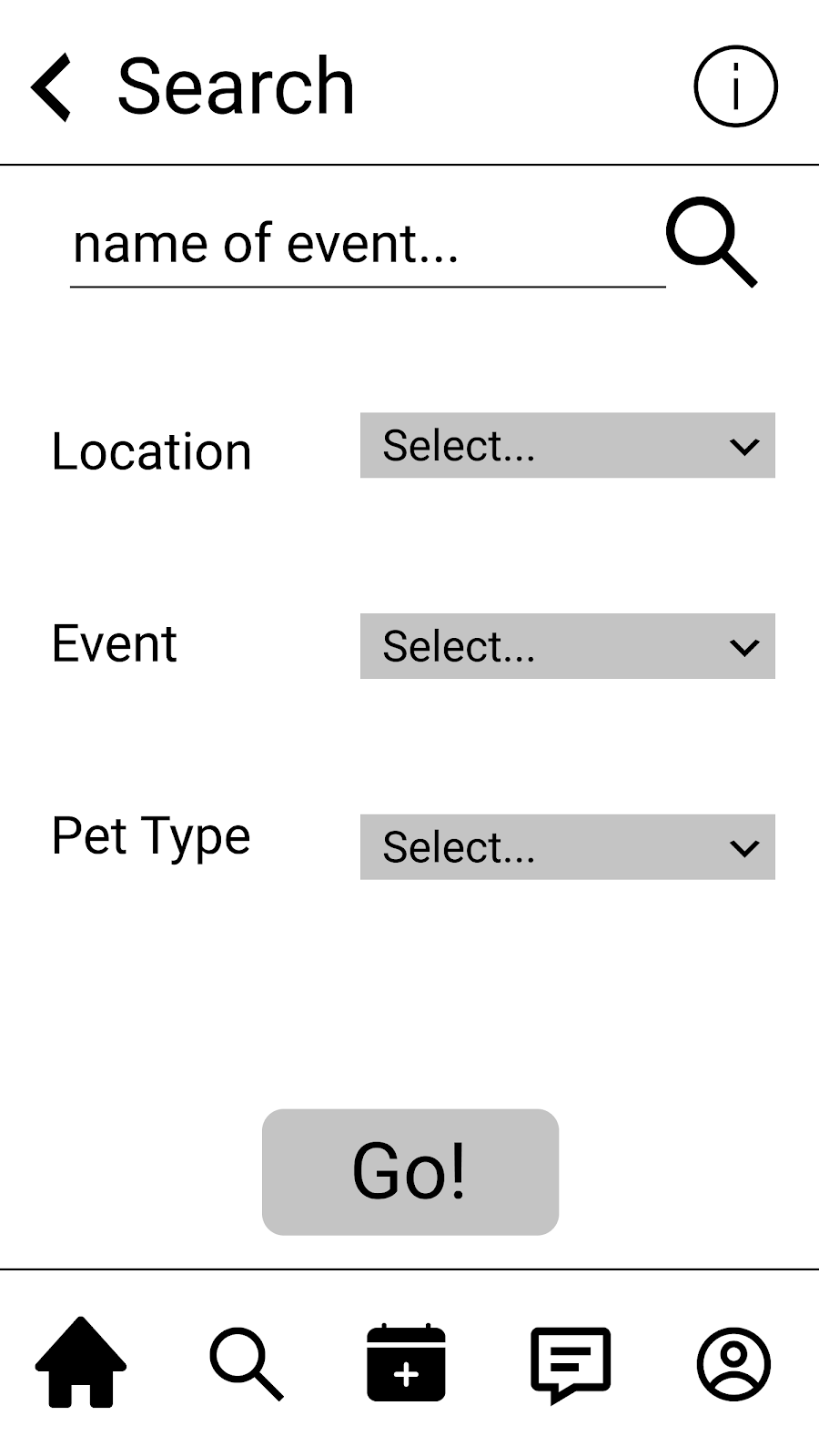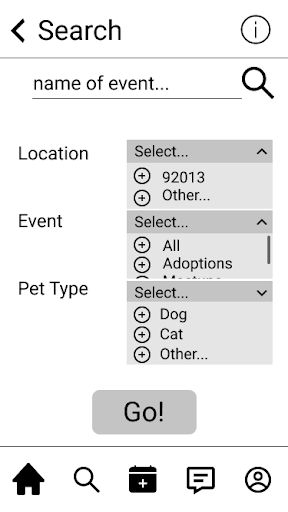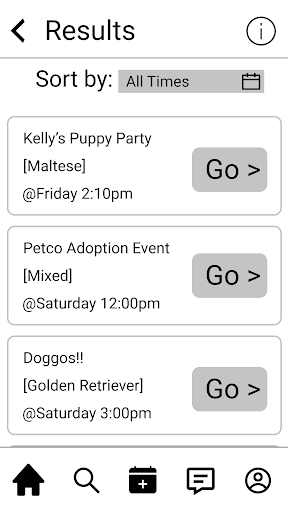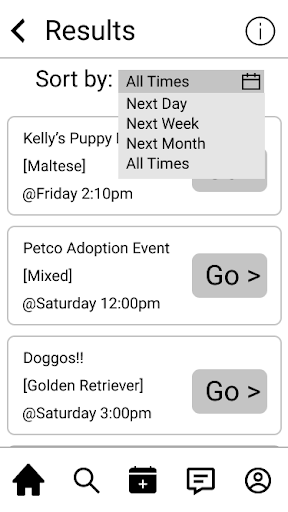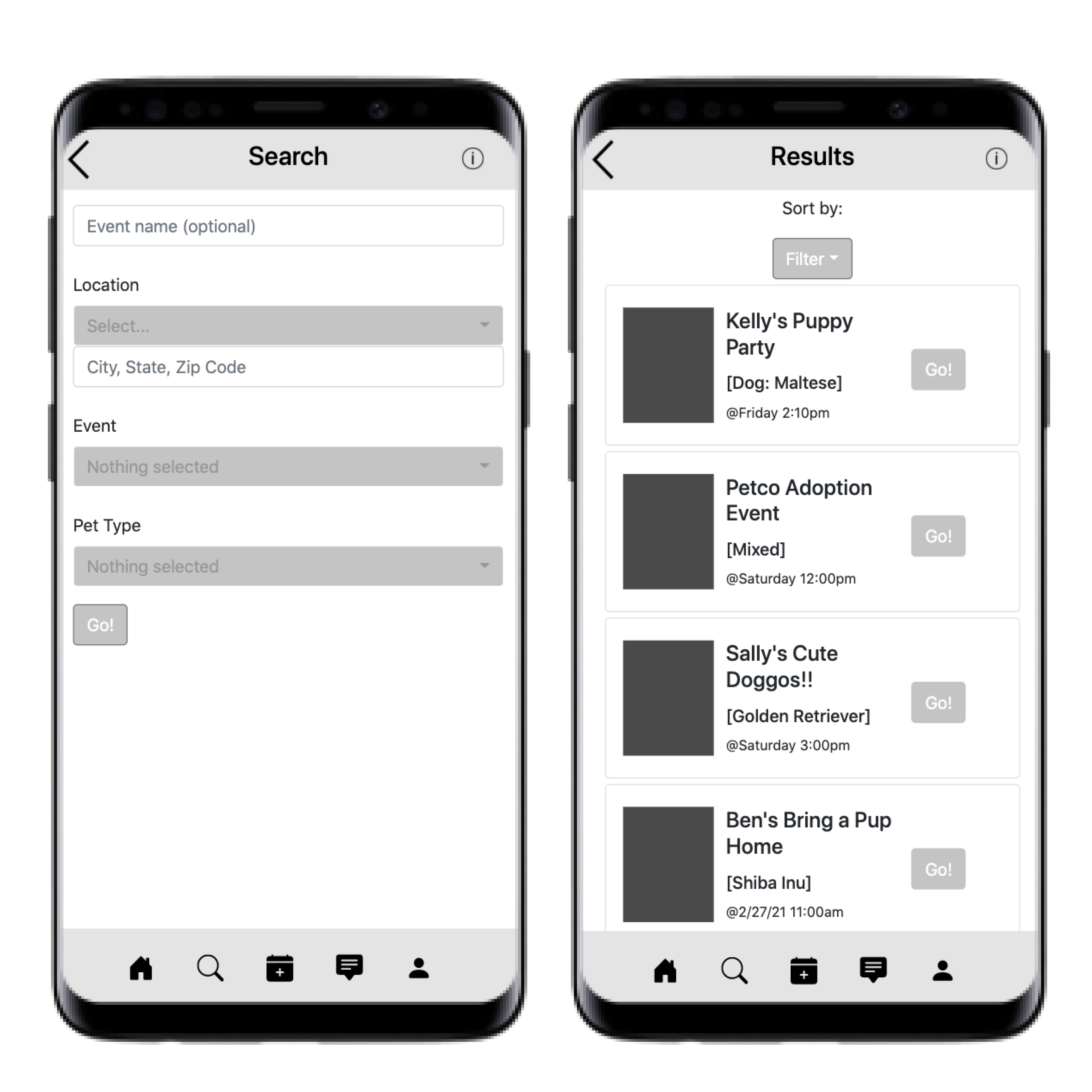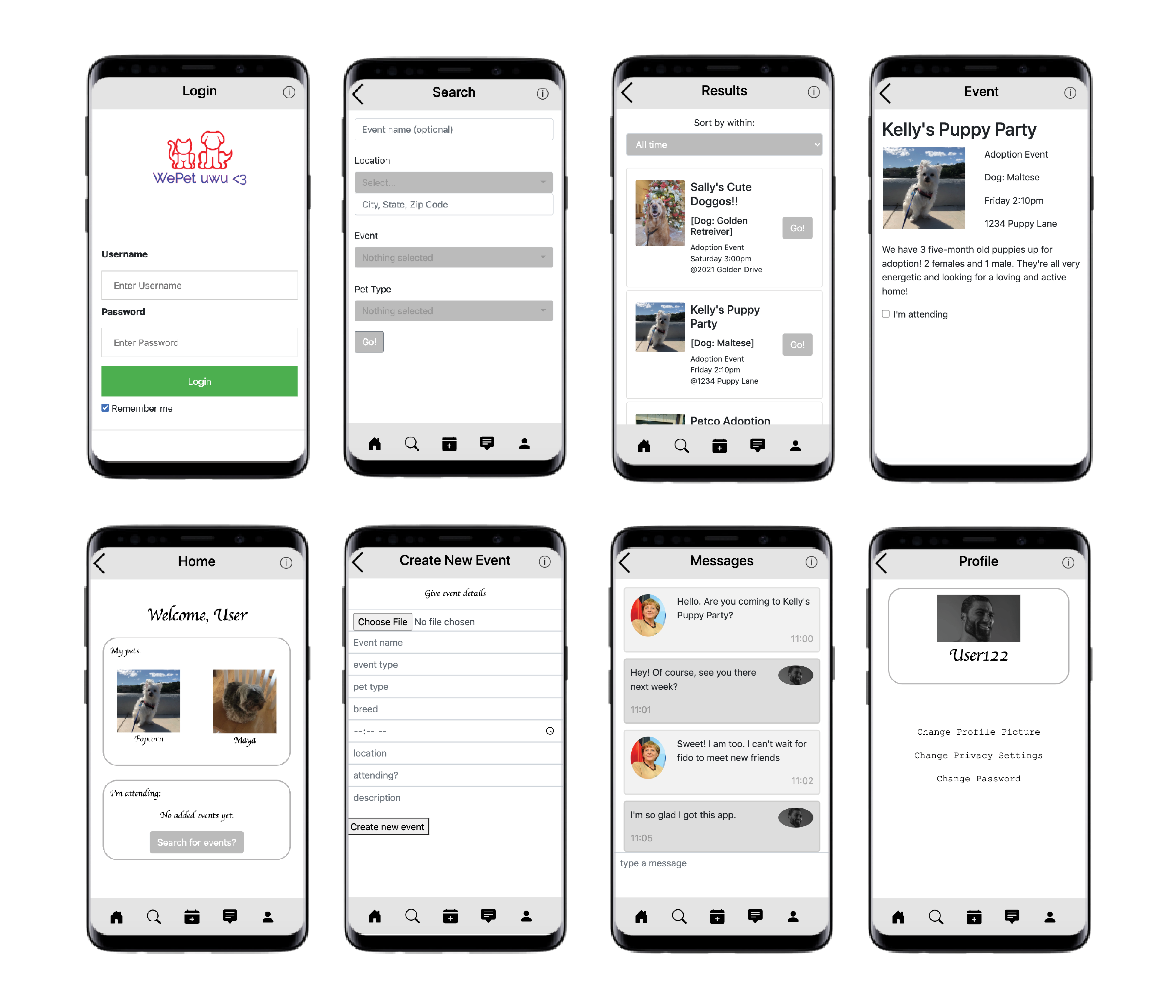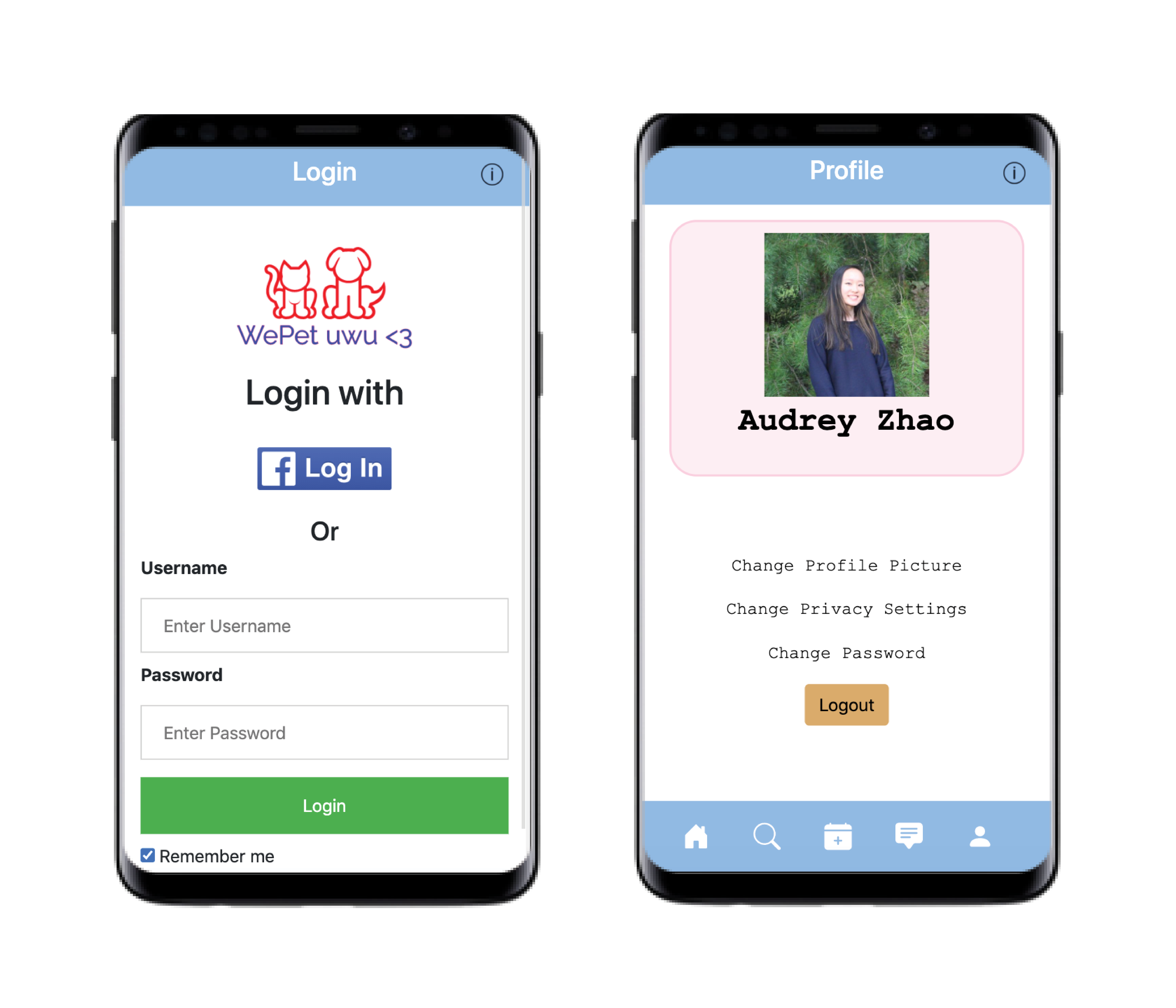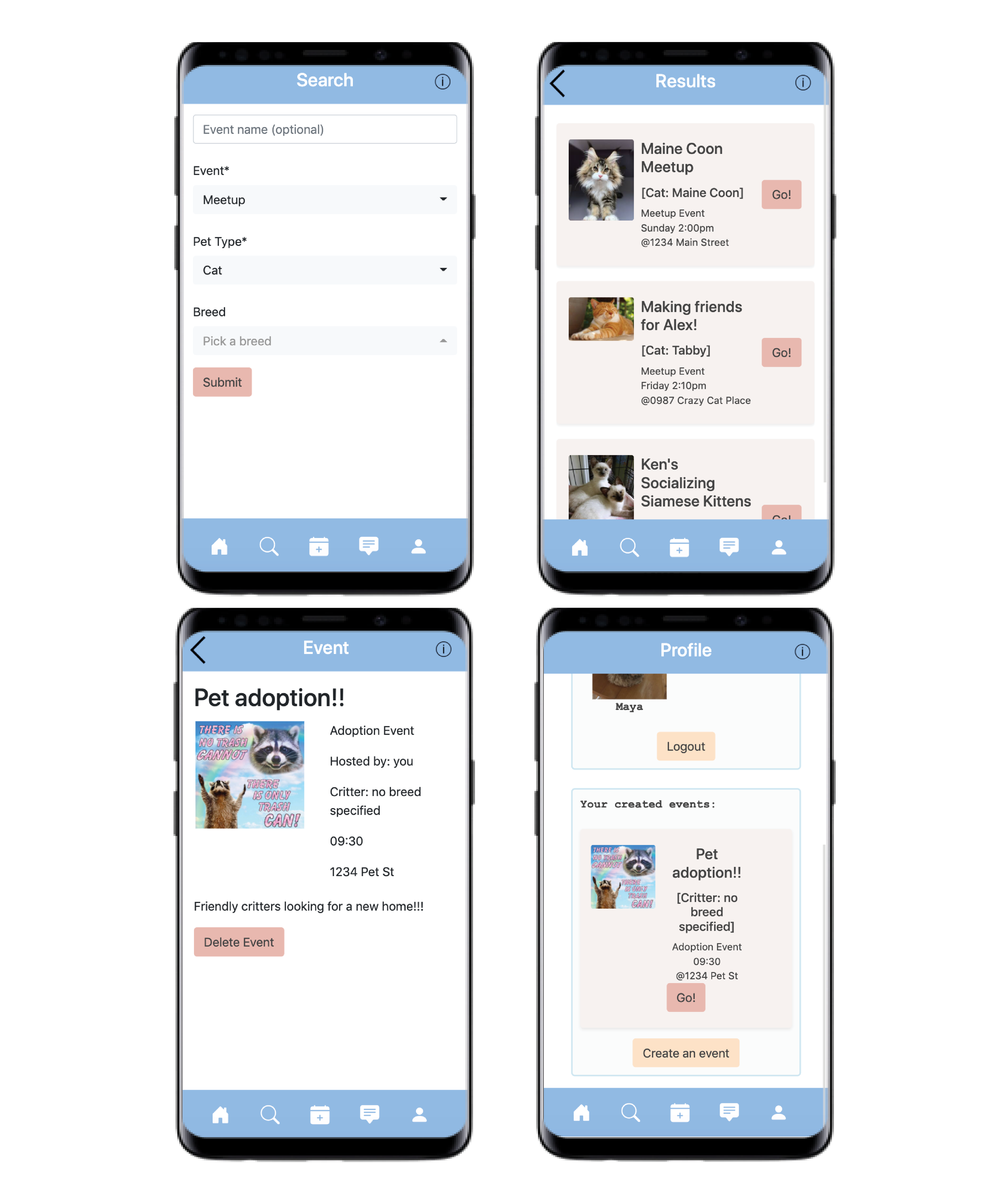User Testing
Once we completed the prototypes, we moved onto user interviews. Three of our peers from the class tested our prototype. They rated and commented on our prototype by abiding by Nielsen's 10 Usability Heuritics. The main comments we had was there was no back button, and therefore, no easy way to access previous pages. In addition, users preferred the first prototype, so we decided to stick with that concept as we moved into wireframing.
